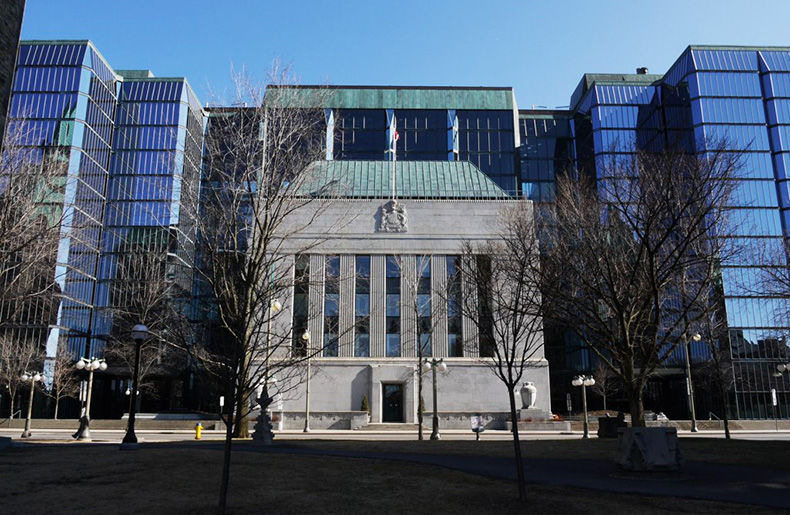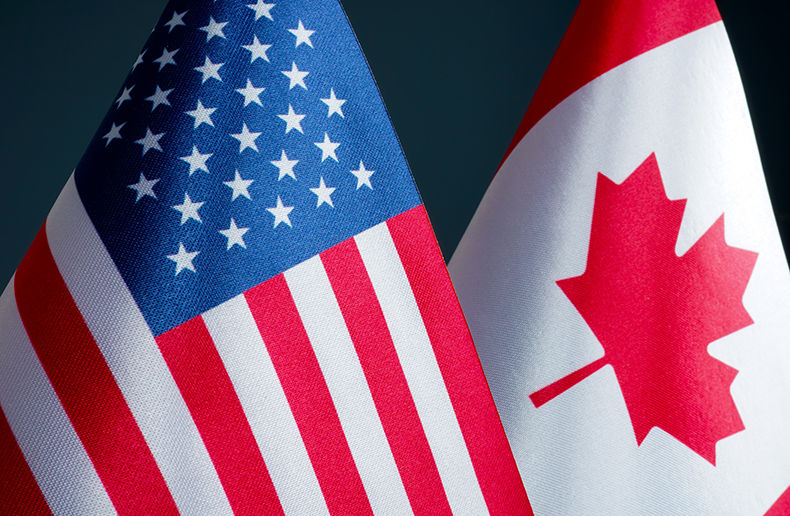In an economic outlook note published on Feb. 28, 2025 entitled Economy Sees Better End to the Year, the Conference Board of Canada hailed the 0.2% growth in real gross domestic product (real GDP) in Canada in December, offsetting the decline in November. In 2024, Canadian real GDP growth stood at 1.5%. Real GDP is so called because it excludes price changes. It is expressed in constant dollars.
The year 2025 seemed to be off to a solid start. But the Conference Board wrote in its note that uncertainty remains in 2025. “New federal limits on international immigration will drastically slow population growth, labour market expansion, and consumer spending.”
But it was the threat of U.S. tariffs on Canadian products that most worried the Conference Board, as they could weaken the Canadian dollar and rekindle inflation. “Business investment…especially the case in the automotive sector, as recent investment in electric vehicles and battery production would be jeopardized. As the economy faces serious threats this year, renewed efforts from all levels of government may be needed to prevent a significant downturn,” states the note.
Weaponizing uncertainty

The threat materialized on Tuesday, March 4, 2025. The Trump administration imposed 25% tariffs on Canadian and Mexican products exported to the United States. It imposed a 10% energy tariff on Canada. Canada retaliated the same day, imposing 25% tariffs immediately on $30 billion of U.S. goods exported to Canada, and will impose tariffs 21 days later, on another $125 billions of goods. The situation is constantly evolving. On March 5, the American president proposed to exempt Canadian-made vehicles from the 25% tariff for 30 days. For its part, Canada is maintaining its duties.
On March 4, CPA Canada's Chief Economist David-Alexandre Brassard shared his reactions to a Leger Marketing Omnibus survey, sponsored by CPA Canada and pan-Canadian bankruptcy trustee BDO Solutions. According to the survey, conducted from Feb. 7 to 10 among a random sample of 1,590 Canadians aged 18 and over, 40% of Canadians said they were mainly concerned about inflation and the rising cost of living (36% among Quebecers).
Brassard said in response that trade tensions and the threat of U.S. tariffs are helping to weaponize uncertainty. “It leaves many Canadians more pessimistic about their financial future than they were a year ago. Personal finance doesn’t exist in a vacuum,” said Brassard. “As consumer confidence drops and spending weakens, Canada could face slower economic growth.”

The uncertainty theme deeply marked the discussion during the annual panel on economic forecasts and financial markets, broadcast on Feb. 19, 2025 by the Cercle finance du Québec. Session moderator and iA Global Asset Management Chief Strategist Sébastien Mc Mahon, invited two panelists to put forward scenarios for 2025.
Jimmy Jean, Chief Economist at Desjardins, spoke of scenarios that are both shared and evolving, “in a context where there is a lot of uncertainty”.
Matthieu Arseneau, Deputy Chief Economist at National Bank, was cautious and worried. “What we've seen over the last 30 to 40 years is now being called into question. We're in a very changing world. I wonder if that suggests lower (stock market) valuations,” says Arseneau. “My anxiety level has gone up and I'm a little more concerned,” he says.

“I was optimistic about 2025, with the Bank of Canada lowering interest rates and inflation under control. The conditions were in place for above-potential growth, since the Bank had neutralized the interest payment shock,” he adds. He explains that the drop in variable interest rates had the effect of cushioning the shock of renewing fixed-rate mortgages. Adding to this enviable picture was the pent-up demand of the past two years, including for investment.
“With the fog and uncertainties in international trade, it's clear that confidence has been affected, and that the rebound in business investment I was anticipating has been compromised,” concludes Arseneau.
United States and credit crunch
We see with the Uncertainty Index that Trump is picking up where he left off in his first term - Jimmy Jean
For his part, Jimmy Jean showed on screen the Economic Uncertainty Index related to trade policy in the United States (the source is Economic Policy Uncertainty Index). “It provides the backdrop for all the scenarios. We see with the Uncertainty Index that Trump is picking up where he left off in his first term. He's now taking a much more aggressive stance,” commented Jean. The US index peaked at 503.96 in May 2020. It fell back to 109.29 in October 2024, and stood at 334.51 in February 2025, according to data published on the Economic Policy Uncertainty Index website at the time of writing.
Despite this, Desjardins' chief economist does not believe that the US economy will be greatly affected by the 25% tariffs imposed on the products of its trading partners. In his worst-case scenario, inflation would barely rise above 3%, the rate recorded in January, up from 2.89% in December. “We're not talking about the 8% to 9% inflation rates we saw during the pandemic,” Jean points out. He expects the U.S. Federal Reserve to cut interest rates twice in 2025.

Jimmy Jean believes, however, that tighter financial conditions could affect US companies exposed to international revenues. They had been disadvantaged by the June 1, 2018 tariffs, he recalls. At that time, the United States had imposed import tariffs of 25% on Canadian steel and 10% on its aluminum. On July 1, Canada retaliated with equivalent retaliatory tariffs on the same materials. Both governments cancelled their respective tariffs on May 20, 2019.
Combined with today's tariffs, a strong US dollar and an increase in the long-term yield curve could, in his view, dampen the performance of these international companies and affect their stock market valuations.
Canada: a good partner
Matthieu Arseneau takes issue with Trump's assertion that the U.S. subsidizes Canada. “It's absurd,” says Arseneau. “There will be a lot of noise and volatility until the April report on U.S. trade deficits,” predicts Arseneau.
In his view, this report will demonstrate that Canada is a good partner for the United States. “Because of Canada's oil and gas sectors, the U.S. has a trade deficit with Canada,” he acknowledges. On the other hand, he points out that over 60% of US industrial sectors have a trade surplus with Canada.
Remaining overweight in equities
On the same day as the US tariffs came into effect, iA Global Asset Management (iAGMA) published its March 2025 Monthly Macro & Strategy newsletter, prepared by Sébastien Mc Mahon and his team. Entitled The Fog of (Trade) War, it identifies a positive highlight in the storm: despite recent challenges, the Canadian economy is showing signs of recovery, thanks to the positive effects of the Bank of Canada's rate cuts.
iAGMA says it remains overweight in U.S. and Canadian equities in its portfolio asset allocation. At the same time, the manager is eyeing opportunities in Europe and emerging markets “as they show signs of recovery.” He remains neutral towards money market and alternative investment asset classes, and is reducing his exposure to fixed-income securities.
The authors of iAGMA's monthly report warn that trade wars have exacerbated economic slowdowns in the past. They drive up costs and disrupt global trade, they note.





















